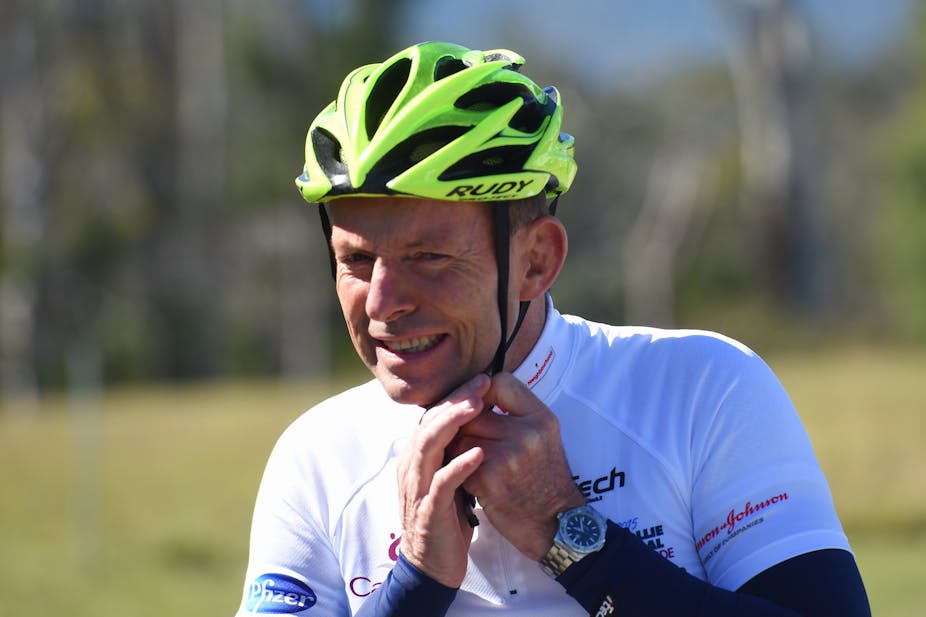One Liberal moderate bluntly characterises the “Monash Forum”, which burst into the energy debate this week, as “the deplorables trying to give themselves a credible front”.
Whatever else it might be, the so-called forum is Tony Abbott’s latest weapon in baiting the Turnbull bear.
Coalition backbenchers who signed the forum’s letter, which calls for the government to construct a new coal-fired power station in the Latrobe Valley on the site of the now-closed Hazelwood, are driven by various motives – revenge against Malcolm Turnbull, an ideological commitment to coal, the desire to sharpen the differences with Labor, a passion for publicity.
For Abbott and his allies Kevin Andrews and Eric Abetz this is a guerilla operation, in part building on an earlier loose conservative grouping. There is also a strong “coal constituency” within Coalition ranks.
It looks like the gathering of signatories involved a whip-around of the usual suspects and a few innocents. It’s unclear how many signed. Invoking John Monash, famed World War 1 general who spearheaded the development of Victoria’s coal power supply, turned out to be too clever by half – descendants of Monash issued an angry statement.
Regardless of numbers, a strongly-motivated few can do a lot of harm, when today’s breathless 24-hour news cycle amplifies everything. The forum’s voice easily reached high volume.
We always knew there’d be a performance from Abbott to mark next week’s expected 30th consecutive negative Newspoll. A radio and TV blitz seemed inevitable.
But we underestimated the planning. Not only has the coal group created bad vibes in the run-up to the poll, but Abbott will be in the Latrobe Valley on Monday with his annual pollie pedal, cycling through the coal and power seat of Gippsland, held by Nationals minister Darren Chester.
The lycra-clad former prime minister will be camera-bait on the current prime minister’s anticipated black day.
As well as being a distraction politically, the coal push is flawed as a policy.
The unwillingness of private enterprise to invest in new coal-fired power stations emphasises how ill-judged it would be for government to do so. It would be flying in the face of the energy transformation, and squandering taxpayers’ dollars.
It would go against the grain of traditional Liberal philosophy, articulated by John Howard, who has declared he isn’t keen on the idea: “I don’t think governments should do things private enterprise do better.”
Treasurer Scott Morrison countered the cheapness argument, distinguishing between “old coal” and “new coal,” with the price of electricity from new coal-fired plants being much higher than from existing ones.
Abbott (who harbours bitterness about Morrison from the coup) lost no time in delivering a backhander to the Treasurer. Recalling Morrison not so long ago flourishing a lump of coal in Question Time, he said, “I thought he was making a lot more sense that day than he was today.”
The forum letter has publicly divided the Nationals, still reeling from the trauma created by the Barnaby Joyce crisis. Joyce is a signatory, but Resources Minister Matt Canavan, Joyce’s one-time chief-of-staff and personally strongly pro-coal, said he didn’t think coal needed subsidies.
The coal insurgency won’t prevail – in that the government won’t be building a Hazelwood 2.0, or any other coal-fired power station. But what will be the political fallout of the push?
Many among the public will discount Abbott’s activities as just his usual trouble-making. The noise, however, reinforces the general impression of a fractured government.
It complicates Energy Minister’s Josh Frydenberg’s pursuit of the National Energy Guarantee (NEG). Assuming a deal is struck with the states and territories on the NEG, it could make it more challenging for the government to then laud that achievement, if the internal dissenters continue to say it is not enough.
Frydenberg meets energy ministers on April 20 on the NEG, with the negotiations much helped by the change of government in South Australia.
The April meeting will look at a design proposal for the NEG; a final design needs to be approved by the governments in August. Legislation for the separate parts of the plan then has to be passed by the South Australian parliament (as a model for other states and the ACT, but not Western Australia or the Northern Territory which are not in the National Electricity Market) and by the federal parliament.
The government’s timetable is to have this done and dusted by year’s end, so the energy plan can come into operation over 2019-20. The timetable is extremely tight, especially given the politics of the Senate, the opposition’s incentive to make trouble, and the discontent among some on the backbench.
The timing fits with the election, due in the first half of next year. It is imperative for the government to be able to say in the campaign that it has a viable energy policy, even if prices are still high.
Where to now for the Monash Forum remains to be seen.
On Thursday Howard delivered a very deliberate, stern message to Liberal MPs, saying they had “a collective responsibility to get the act together.”
Supporters around the country “want you to work together. They want you to bury differences,” he said in an ABC interview. “They want you to make certain that we speak as much as possible with one voice and, sure, Malcolm Turnbull has got to give the lead - that can’t be disputed - but he is not the only person who has got a responsibility. Every man and woman in the parliamentary party has one as well.”
It seems very unlikely Abbott will heed his old boss.
As for Monday, Western Australian Liberal backbencher Andrew Hastie had some advice for the man who invoked 30 lost Newspolls when making his 2015 leadership challenge: “Just acknowledging the irony is probably a good way forward.”

